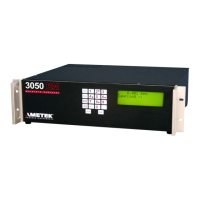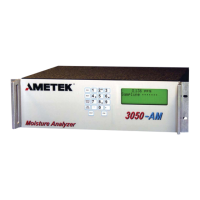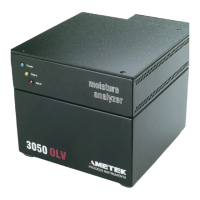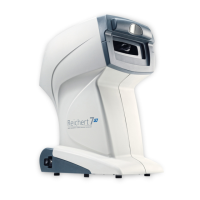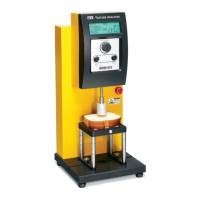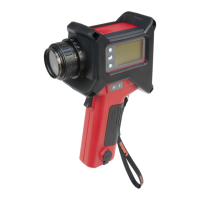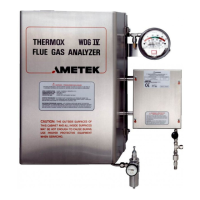Troubleshooting
| 6-3
Low Light Conditions
The Xenon Flash Lamp emits ultraviolet light. Never look directly
into the lamp while it is flashing
A low light alarm indicates a possible issue with the Xenon Lamp or an
obstruction in the optical pathway. An obstruction can be caused by de-
posits on the optical surfaces or by a mechanical misalignment.
The Xenon lamp flashes in bursts at a rate of 50 Hertz. A burst should oc-
cur at one second intervals. The number of flashes per burst is automati-
cally set during a zero cycle.
Figure 6-1. Detector Flash at Zero
There is an audible “chirp” from the lamp during a burst of flashes. If
there is too much ambient background noise, the lamp can be discon-
nected from the enclosure wall and its output can be confirmed visually. If
the lamp is not flashing, this could indicate a problem with either the flash
lamp assembly (403225901) or the lamp power supply (100-2061).
• Access the Configure_Calibration_Zero Calibration screen (Fig-
ure 6-1) on the user interface. The number of Flashes at Zero can be
viewed for each detector. If the number of flashes exceeds 30 there are
three possibilities.
- The Xenon lamp has degraded and the energy-per-flash has dropped.
(Typically a lamp will last in excess of three years.)
- An optical surface has been fouled sufficiently to block light.
- The lamp assembly, detector assembly, or mirror block is not secure
and caused a misalignment of the optical system.
!
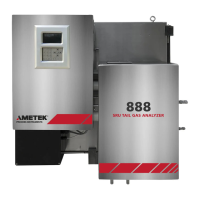
